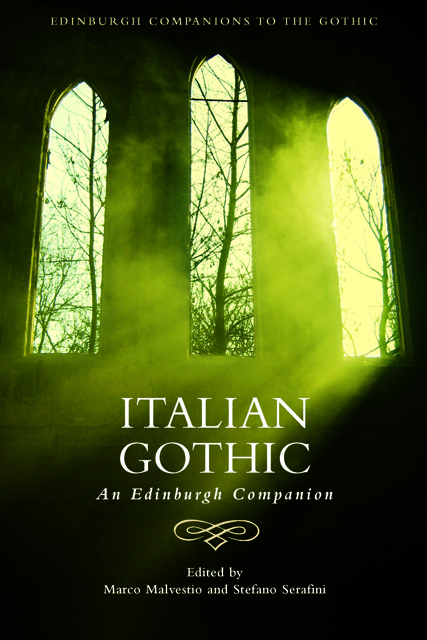6 - The Decline of the Gothic: 1980–2020
Published online by Cambridge University Press: 20 October 2023
Summary
The last four decades have been an ambivalent period for the Gothic in Italian culture. The 1980s and the 1990s saw the transformation of Gothic cinema into more markedly horror cinema, with an emphasis on splatter and gore, while the quantity of horror films produced in Italy thereafter significantly decreased. As far as fiction is concerned, the 1980s opened with the debate on the fantastic, which (together with the diffusion of postmodernism and its characteristic merging of different cultural codes) in many ways helped cast a new light on overlooked areas of Italian literature, including the Gothic. While this debate caused an expansion of the Italian literary canon, its critical premises were extremely narrow and prevented an open discussion of genre fiction and popular texts – despite the growing and persistent success of Gothic mass products such as the comic-book series Dylan Dog (1986–present). Contemporary Italian Gothic fiction is polarised into, on the one hand, highbrow works reappropriating Gothic imagery without regard for popular products and, on the other, genre fiction that has no space in the mainstream literary debate. Gothic tropes can be found also in the most recent forms of Italian supernatural fiction, as evidenced by the debate on the so-called ‘New Weird’. Nevertheless, the presence of Gothic elements within mainstream fiction is filtered through prejudices against popular forms that prevent this mode from being fully embraced.
Italia magica or Italia gotica? Gothic Fiction in Italy between 1980 and 2020
The 1980s in Italy were characterised by the debate on the fantastic. Starting with the translation of Tzvetan Todorov's Introduction à la littérature fantastique (1970) in 1977, Italian critics began to examine the fantastic in Italian literature and produced a series of anthologies of texts belonging to this tradition. In 1984, Enrico Ghidetti edited two volumes on the ‘racconto nero’ [dark tale] of the nineteenth and twentieth centuries respectively (the latter with Leonardo Lattarulo). Italo Calvino published the anthology Racconti fantastici dell’Ottocento in 1983 (though this did not include any Italian author) and later reprised the debate in a series of articles and conferences. Finally, in 1988, Einaudi published a new edition of Gianfranco Contini's Italia magica, which had originally appeared in France in 1946 and had remained almost unknown in Italy.
- Type
- Chapter
- Information
- Italian GothicAn Edinburgh Companion, pp. 89 - 104Publisher: Edinburgh University PressPrint publication year: 2023



